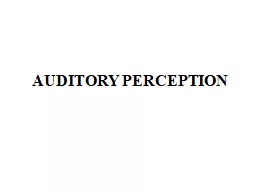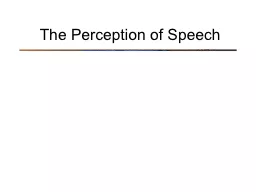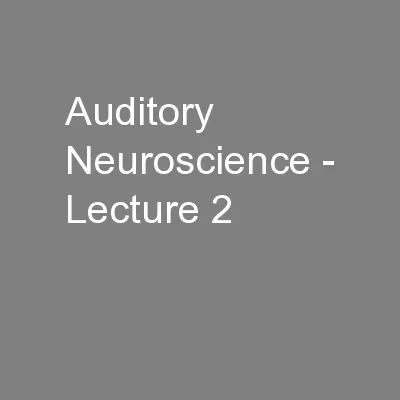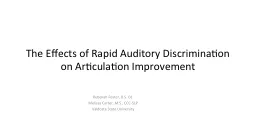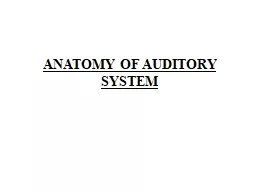PPT-AUDITORY PERCEPTION Pitch Perception
Author : joy | Published Date : 2022-06-08
We associate pitch the high or low quality of a sound with frequency Pitch can vary due to factors other than frequency such as the intensity or context of a
Presentation Embed Code
Download Presentation
Download Presentation The PPT/PDF document "AUDITORY PERCEPTION Pitch Perception" is the property of its rightful owner. Permission is granted to download and print the materials on this website for personal, non-commercial use only, and to display it on your personal computer provided you do not modify the materials and that you retain all copyright notices contained in the materials. By downloading content from our website, you accept the terms of this agreement.
AUDITORY PERCEPTION Pitch Perception: Transcript
Download Rules Of Document
"AUDITORY PERCEPTION Pitch Perception"The content belongs to its owner. You may download and print it for personal use, without modification, and keep all copyright notices. By downloading, you agree to these terms.
Related Documents

